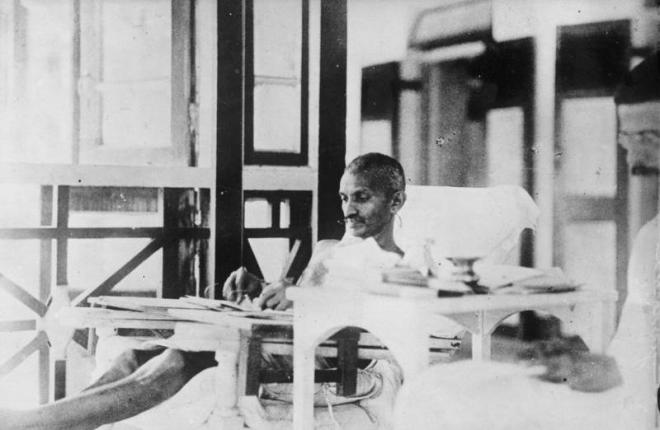Reviewing Gandhi’s Printing Press: Experiments in Slow Reading, C. Christopher Smith emphasizes the way the newspaper Gandhi created, Indian Opinion, aimed to cultivate certain habits of mind and body among its readers, through both its content and form:
The selection and arrangement of extracts in the Indian Opinion, as well as the pamphlets that Gandhi published, served to create a rough surface—in contrast to the smooth macadam of industrialization—that would help readers slow down and contemplate what they were reading. The content that Gandhi offered in his publications was meaty and aimed at promoting the cause of satyagraha. News stories and excerpts from authors such as Ruskin, Tolstoy, and Thoreau, whose work Gandhi saw as essential to the ethics of satyagraha, served to form a slow, attentive community that could resist the empire’s industrial pressure for speed.
How today’s West might learn from Gandhi’s philosophy of reading:
We are in dire need today of practices that shape our identity as a people, and that teach us to slow down and be attentive to the world around us and the power that it exerts upon our desires. As Gandhi’s experiences in South Africa indicate, reading can be an important practice of this sort, but it must be done with intentionality about what we read and how we read it. Committing to practices of reading and conversation (about reading) in our church communities can help to provide the structure we need to begin the challenging process of slowing down. Perhaps our communities will have leaders like Gandhi who can help guide us in these kind of practices, and recommend resources that will help us to read (and live) more slowly and attentively. If we are to bear witness to a different way, then we must seek to apprentice ourselves to practices that—when sustained over many years—will inevitably slow us down.
(Photo of Gandhi at work via Wikimedia Commons)
